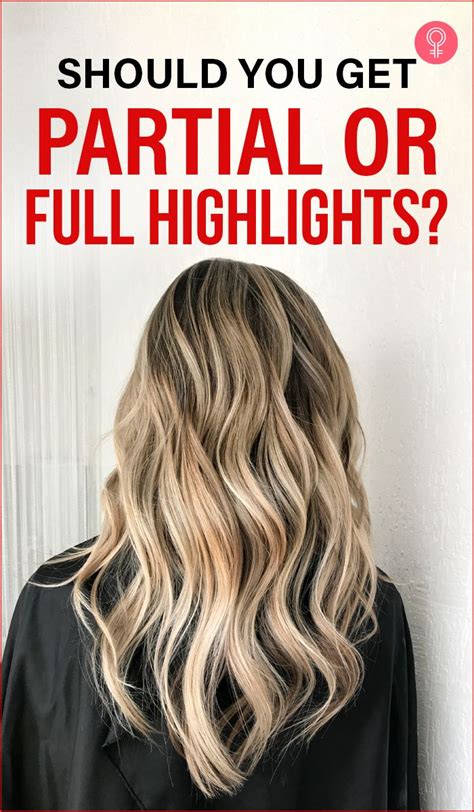Introduction
When it comes to hair coloring, there are two primary techniques that stand out: full highlights and partial highlights. Both methods offer unique advantages and suit different preferences. Understanding the key distinctions between these two techniques is crucial for achieving your desired hair goals.

Full Highlights: A Majestic Transformation
Full highlights involve applying color to all sections of your hair, creating a uniform, blended look. This technique is ideal for those seeking a dramatic transformation or covering up gray hair effectively. The process typically requires more time and product than partial highlights, but the results can be stunning.
Partial Highlights: Subtle Enhancements
Partial highlights, also known as “foilayage” or “balayage,” selectively color specific sections of your hair, leaving others untouched. This method produces natural-looking, low-maintenance results that add subtle dimension and texture to your locks. Partial highlights are suitable for creating a sun-kissed effect or enhancing your natural hair color.
Key Differences at a Glance
| Feature | Full Highlights | Partial Highlights |
|---|---|---|
| Coverage | All sections of hair | Specific sections |
| Intensity | Bold and impactful | Subtle and natural |
| Maintenance | Requires more frequent touch-ups | Less frequent touch-ups |
| Time and Cost | More time-consuming and expensive | Less time-consuming and less expensive |
Advantages and Disadvantages
Full Highlights:
- Pros: Complete coverage, dramatic transformation, hides gray effectively
- Cons: Time-consuming, high maintenance, can be harsh on hair
Partial Highlights:
- Pros: Natural-looking, less damage, low maintenance
- Cons: Less impactful, may not fully cover gray
Motivations for Choosing Full Highlights
- Desire for a bold, noticeable change
- Coverage of significant amounts of gray hair
- Create an even, blended hair color
Motivations for Choosing Partial Highlights
- Enhance natural hair color with subtle highlights
- Add dimension and texture without overpowering your hair
- Create a sun-kissed or ombre effect
Pain Points of Each Technique
Full Highlights:
- Can damage hair if not done properly
- Requires frequent touch-ups to maintain the look
- Can be expensive to maintain
Partial Highlights:
- May not provide complete coverage for gray hair
- Can be difficult to achieve a uniform look on all hair types
Tips and Tricks
- Consult with a professional hairstylist to determine which technique is best for your hair type and desired look.
- Use high-quality hair products specifically designed for color-treated hair.
- Avoid over-washing your hair, as it can strip away color.
- Use heat protectants when styling your hair to prevent damage.
Innovative Applications: Coining the Term “Hybridization”
By combining the best of both worlds, a new technique known as “hybridization” emerges. This hybrid approach involves applying partial highlights to the top layers of your hair, while using full highlights on the lower layers. This technique offers the versatility of full highlights with the natural-looking results of partial highlights.
Statistics and Trends
According to the American Hair Color Association, full highlights account for approximately 35% of all hair color services, while partial highlights represent around 25%. These figures indicate the growing popularity of both techniques.
Conclusion
Full highlights and partial highlights offer distinct benefits and drawbacks. By carefully considering your hair goals, motivation, and lifestyle, you can make an informed decision about which technique is right for you. Whether you desire a dramatic transformation or subtle enhancements, both full and partial highlights can help you achieve the hair you’ve always wanted.
